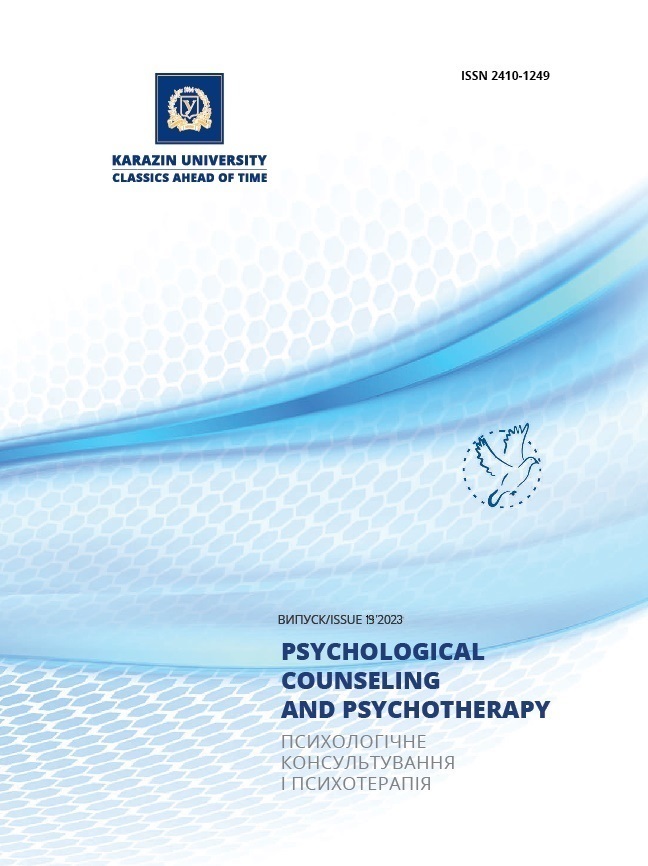Features of the structural organization of the identity of the borderline personality
Abstract
The article is devoted to the analysis of the features of the structural organization of individuals who are organized borderline. At the psychotherapeutic reception today, borderline organized personalities make up a significant proportion. The given data indicate that the proportion of such individuals in the population can reach 25%, and at least twice as much at the reception of a psychotherapist. Therefore, knowing the characteristics of these personalities is useful, and is the basis for successful psychotherapy. The personal identity of borderline individuals is described as diffuse: instability and variability of ideas about themselves and the world, values, goals, desires, inconsistent and contradictory behavior associated with the actualization of various "split" parts of their identity. Another important feature of such people is polarization - "black and white" perception, when he perceives himself and others either only as "good" or only as "bad": they are not able to perceive themselves and others in the unity of bad and good. Their world can either stably split into bad and good objects, or the same objects at one time are only good, and at another - only obnoxious. Such people do not have a stable and articulated self-concept, they do not know what they want, what they strive for, experiencing an “emptiness” that cannot be filled inside. This may manifest itself in the fact that they cannot decide on professional interests, areas of employment, choice of a partner, etc. At the same time, there is no description in the literature of specific phenomena of the organization of the identity of a person with a borderline organization. We used the case analysis, as such, which describes the individual feature of the structural organization of identity. As a result, specific features of the personal identity of borderline organized individuals were revealed: ego-dystonicity of some parts of the identity; their insufficient articulation; their irrational organization according to the type of mystery and magic; polarization and contrariety of parts of identity; their fantasies coming from some parts of their identity cannot be translated into reality; parts of identity exist in different chronological spaces, which deprives them of the possibility of communication and internal dialogue; the parts of the identity themselves are internally heterogeneous, contradictory, inconsistent; identity is characterized by the presence of some "closed" parts that are internally negatively connoted (shame, fear, etc.) and have no opportunities for manifestation.
Downloads
References
McWilliams N. (2020). Understanding Personality Structure in the Clinical Process. Psychoanalytic Process. Guilford Publications.
Kocharyan, A., Barinova, N. (2021). Therapeutic strategy of K. Rogers. Psychological Journal, H.S. Kostyuk Institute of Psychology. 7(5), 7-16. (in Ukrainian)
Mahler M.S., Pine F., Bergman A. (2000). Psychological Birth of The Human Infant Symbiosis And Individuation. N.Y.: Basic Books.
Samuels J., Eaton W.W., Bienvenu O.J. 3rd, Brown C.H., Costa P.T. Jr., Nestadt G. (2002). Prevalence and correlates of personality disorders in a community sample. Br. J. Psychiatry. 180, 536-542.
Torgersen S., Kringlen E., V Cramer Cramer V. (2001). The prevalence of personality disorders in a community sample. Arch. Gen. Psychiatry. 58(6), 590-596.
Grant J.E,. Kim S.W, Hartman B.K. (2008). A double-blind, placebo-controlled study of the opiate antagonist, naltrexone, for the treatment of pathological gambling urges. J. Clin. Psychiatry. 69(5), 783–789.
Kreisman J.J., Straus H. (2021). I Hate You-Don't Leave Me: Third Edition: Understanding the Borderline Personality. Understanding the Borderline Personality. N.Y.: Random House.
Wirtz U. (1989). Seelenmord: Inzest und Therapie. Published January 1st 1989 by Kreuz Verlag.








